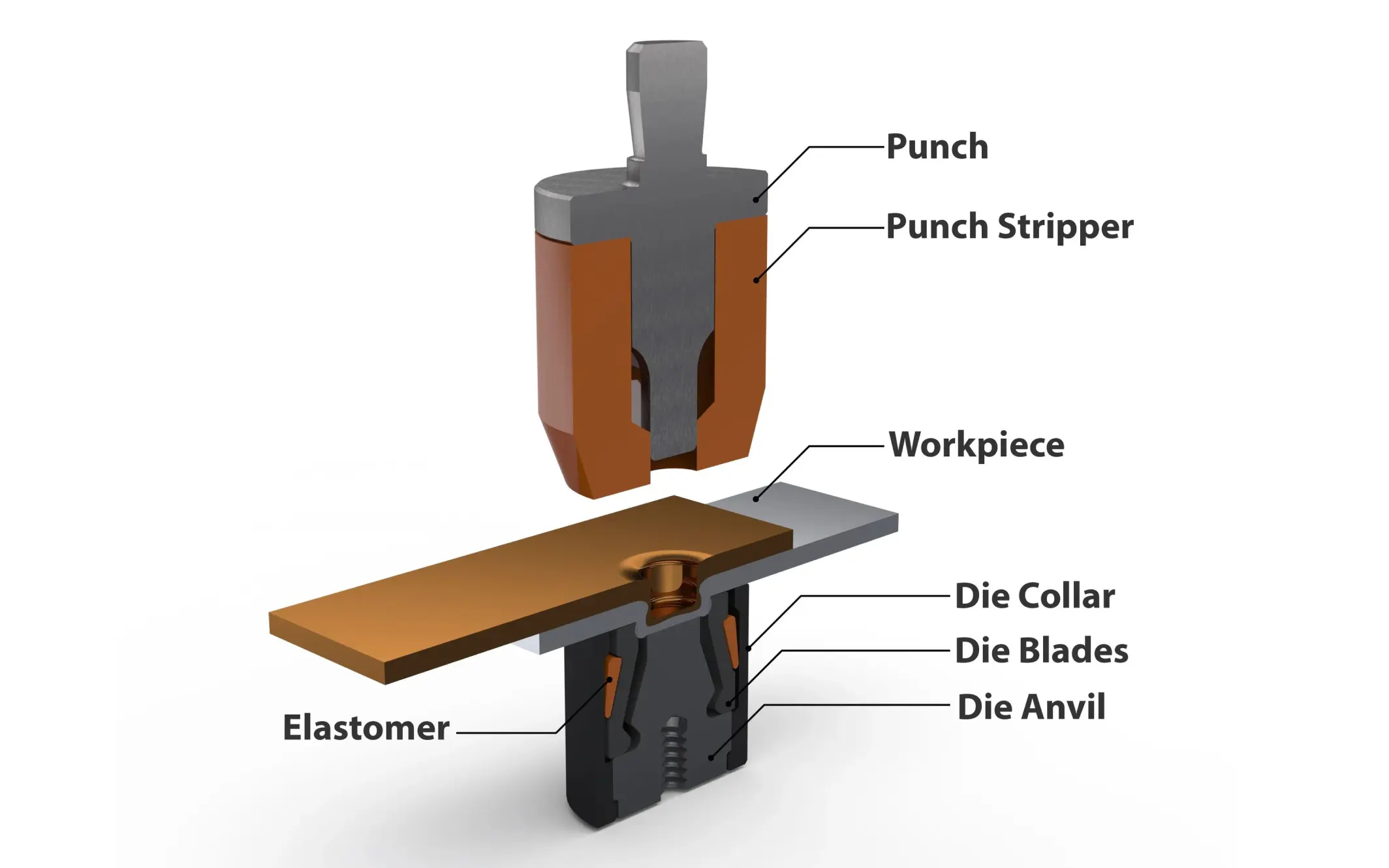
Channel letters are three-dimensional signs commonly seen on commercial buildings. Typically made from sheet metal, channel letter clinchers attach the sides of the letters to their backs.
Channel letter clinching machines have specialized geometry compared to normal clinch tooling. The letters can be deep (6 inches or more), so a long, slender stem is needed for access.
In this article, you’ll learn
- The right time to buy a channel letter clincher
- What to look for when buying a clincher
- Tips for clinching
If you’re ready to order your first clincher or need advice on the right machine, don’t hesitate to reach out to our team.
3 signs you need a channel letter clincher
If one or all of these situations apply to you, investing in a channel letter clincher will pay off:
- A clincher can significantly speed up the production process if your business already has a CNC letter bender and router. These machines allow you to produce letters quickly and with high precision.
- Even if your production volume is not high, a clincher can free up an operator to focus on other tasks, potentially saving up to 80% of their time.
- For businesses producing more than 3–5 sets of letters per week, the ROI for a clincher can be realized in just a few months, making it a cost-effective addition to your production line.
How to choose a channel letter clincher
The most important question if you’re considering channel letter clinching is the material you’re working with.
Clinchers work well with solid metals like aluminum, steel, and copper.
If your production involves aluminum composite material (ACM, such as Dibond) or polycarbonate (Lexan), these cannot be clinched but can be self-piercing riveted (SPR). Not all clinchers support SPR, so you should check that first (contact us for help here).
Note that acrylic cannot be joined with either clinching or SPR.
Other factors that are also important:
- Your production needs. Running a small-scale operation rather than a large-scale one will influence the type and size of the clincher you need.
- Space requirements. If space is limited, and you are not targeting large contracts (24 inch letters and under), a smaller clincher model may be more appropriate.
- Growth potential. If you’re aiming to expand, or you’re taking on larger contracts, investing in a more capable machine is better. In our experience, people rarely regret having a powerful machine with greater capacity a couple of years down the line.
- Cycle speed. A pneumatic channel letter clincher is, by far, the fastest machinery for joining letters. Hydraulic machines are powerful but they are more noisy, messy, and much slower in operation. Getting 80–90 cycles per minute is a real production beast when joining a long line of tabs quickly. You can read more about pneumatic vs. hydraulic clinchers here.
Tips for channel letter clinching
The most important things to keep in mind for channel letter clinching are:
- The material overlaps. Depending on the tooling used, ensure there is enough material on the return (fold-over). For example, if the die is on top, you might need a half-inch return. If the punch is on top, a ⅜-inch return may suffice.
- The depth of the letters. A 6-inch deep letter needs a lower tool with a 6.50-inch height to allow clearance. It’s also good to have a larger stroke on the machine to make inserting and removing letters easier.
- The size of the letters. A larger machine throat will be necessary for letters 24 inches tall and greater.
The LockNess - Lightning-fast channel letter clinching

If you’re looking for a high-quality and reliable channel letter clinching machine, we’ve got you covered. The LockNess machine is lightning-fast and can accommodate a variety of materials. We also offer a range of clinch tooling for different applications.
Take our 5-day course
Get an article every day for 5 days
Don’t have time to read everything now? Sign up and we’ll send you an article every day for 10 days.



.webp)
